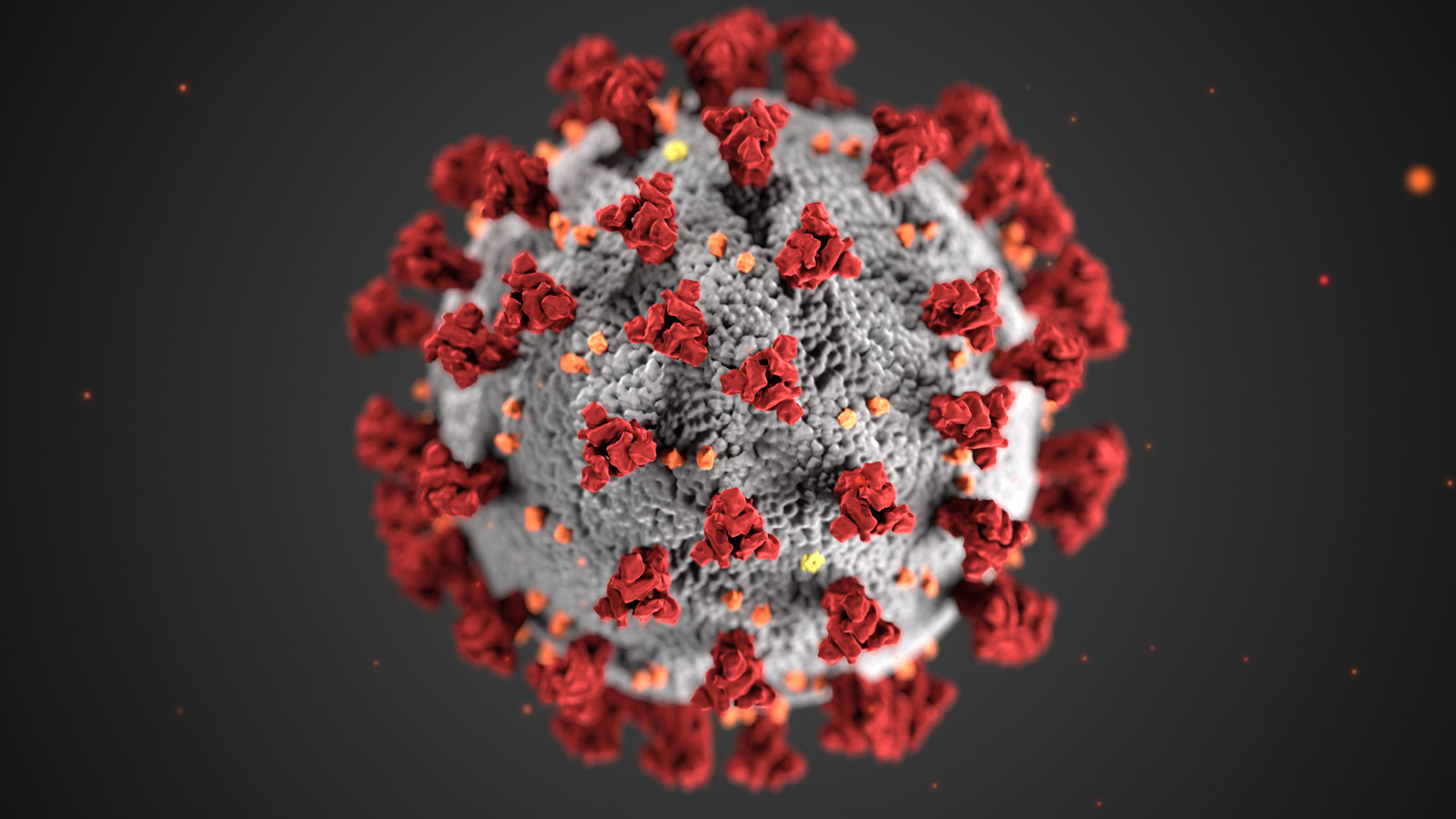What is Covid-19 disease?
It is a viral infection caused by a virus belonging to corona virus family. It causes a lung condition called severe acute respiratory syndrome wherein, the lung gets infected to a varying degree sometimes associated with severe inflammatory reaction causing low oxygen levels. It was reported for the 1st time in February 2003 from China, when it was popularly known as “SARS”.
Covid-19 virus is genetically related to the SARS virus but it is not the same virus (WHO declaration). This new corona virus was reported to have caused a cluster of cases of pneumonia in people associated with Huanan Seafood wholesale market in Wuhan, Hubei province of China (NEJM, March 2020). This outbreak was declared on the 31st of December 2019 (Hence, the name COVID-19). It is believed that the infection spread to humans due to close proximity with infected bats. Subsequently, the virus got transmitted from human to human through droplet and airborne spread. WHO declared it as a pandemic in February 2020 and it has already spread to over 180 countries. Unlike the initial SARS infection, SARS-CoV2 (severe acute respiratory syndrome-corona virus2) spreads easily, spreads far and causes more severe illness.
Why did the infection happen?
Infections have been around for millions of years even before mankind existed on this planet. Viruses are very minute organisms not visible to naked eye and tend to spread from one host to the other more easily. Humans and animals both act as hosts for many viruses, bacteria, parasites and also fungi. As the frequency and intensity of interactions between humans and animals increases the risk of infections (usually limited to the animal kingdom) spreading to humans also increases. As the humans do not have immunity against such infections they tend to fall sick easily and also transmit the virus to others due to possibilities created by human behavior. Infections spread to far away countries due to the travel habits of the human beings and more social interactions.
How does the virus spread?
Respirtatory infections can be transmitted through droplets of different sizes: droplets of size 5-10 ɥm are called respiratory droplets and those < 5ɥm are called droplet nuclei (can cause airborne spread). Droplet transmission occurs when a person is in close contact (within 1 meter) with someone who has respiratory symptoms (Ex: coughing or sneezing) and is therefore at risk of having his/her mucosae (mouth and nose) or conjunctiva (eyes) exposed to potentially infective respiratory droplets. Transmission of the covid-19 virus can occur by direct contact with infected people and indirect contact with the surfaces in the immediate environment around the infected person.
In July 2020, WHO had declared that Covid-19 virus could spread through airborne route also particularly in indoor settings with poor ventilation.
So, it is evident that there are 3 possible ways of acquiring covid-19 virus:
1) Airborne spread where a person can inhale air suspended with virus particles which can spread far and last longer in the air (minutes to hours)
2) Droplet inhalation– wherein respiratory droplets released from an infected person is inhaled by an individual in close proximity.
3) Fomite transmission– contact with surfaces infected by respiratory secretions of an infected person.
So far, there is no evidence to suggest transmission by any other route.
What are the symptoms of the covid-19 infection?
Fever is the most common symptom. Other common symptoms include cough, cold, sore throat, loss of taste, loss of smell, body pains, headache, breathlessness and extreme fatigue. Less common symptoms include: nausea, vomiting, pain abdomen, diarrhea, joint pains, sleeplessness, giddiness and chest pain.
What are the complications?
Majority of patients have mild infection only (nearly 80%). Most common complication is severe pneumonia and respiratory failure. Although patients of any age group can develop this complication, it was noted that the incidence is less in children and vaccinated individuals.
1st 5 days of the illness is called the “Viraemic phase” as the virus multiplies the most during this period and patients can have the classic symptoms as described above. 5-14 days is the crucial period as complications can occur during this period. It is also called the “Inflammatory phase”. Human body mounts an immune response against the virus (with an intention to contain the virus) but sometimes this itself can affect the body and cause the complication of ARDS (acute respiratory distress syndrome). Patients who develop ARDS require ventilator support (invasive or non-invasive).
Pneumonia is an infection of the lung tissue and the subsequent inflammatory reaction within. Sometimes, patients may experience fever again after the recovery from the initial fever, this 2nd fever episode is due to the inflammatory reaction.
Pneumonia and ARDS are not same. ARDS is a severe form of inflammatory damage to both the lungs causing breathlessness and low oxygen levels. There can be many causes for ARDS; pneumonia is usually the most common reason.
Persistence of cough ± breathlessness should prompt suspicion for pneumonia and encourage investigations like CT scan of the chest.
Presence of persistent fever, low oxygen level indicates significant pneumonia. Blood tests can help identify the complications early and also follow the response to treatment.
Other complications include: multiorgan failure, low platelet count, blood clots in the lungs or elsewhere, heart failure secondary to heart muscle involvement, heart rhythm disturbances, liver involvement causing hepatitis, shock and sudden death.
How is Covid-19 infection diagnosed?
a) Rapid antigen test (RAT): this is usually performed as a screening test. It is cheap, easily available and easily performed test. Nasal and or throat swab is collected and the sample is put on a cartridge which shows colour change if there is infection. RAT can give false negative reports. If the clinical suspicion is strong and RAT is negative then, RT PCR test has to be performed. If the clinical picture is suggestive of Covid-19 infection and the RAT is positive then, the diagnosis of Covid-19 infection is usually right.
b) SARS-CoV2 RT PCR test: it is the most definitive test available. Sometimes, false negative test result can happen due to improper sample collection or low viral load in an individual. False positive report can rarely happen due to sample contamination. It is important to collect the sample at an appropriate time period. If performed too early (less than 2 days after fever onset) or performed too late (more than 5- 7 days after fever onset) the test result can be false negative again. Repeat the test again after a gap of at least 24 hours if there is a chance for false negative result.
CT scan of the chest shows some typical findings which can increase the suspicion of covid-19 infection. If the clinical features are suggestive of covid-19 disease and the CT scan shows typical findings then the diagnosis is usually right. Typical CT findings include multiple subpleural ground glass opacities involving both the lungs. Radiologists usually give the report mentioning 2 terms.
1) CORADS means Covid-19 reporting and data system. CO-RADS assesses the suspicion for lung involvement of covid-19 infection on a scale from 1 (very low) to 5 (very high).
2) CTSS means CT severity score which is used to quantify the extent of lung involvement expressed as a value against 25 or 40. Significant CTSS can vary from center to center but usually a score of 8 or above out of 25 and score of 19 or above out of 40 is considered to be significant.
Blood tests are performed to assess the extent of inflammatory burden in the blood and also help guide response to treatment.
It is very important to know when exactly each test has to be performed (during which phase of the illness). Your doctor has better knowledge based on your clinical picture, oxygen levels and duration of the illness.
It is equally important to follow your doctor’s interpretation of the reports and try not to make judgement on your own.
What treatment is available for Covid-19 infection?
There is no specific drug to stop the covid-19 virus or kill it. Many medications like Doxycycline, Ivermectin, favipirapir and Remdesivir are used in the initial viraemic phase to reduce the burden of viral load to whatever extent possible. Some studies do not show any benefit from these medications but each one of them has their individual capabilities of mildly reducing viral replication although not specific for covid-19 virus. Many times clinicians choose to use them for lack of a better alternative.
In the absence of a specific antiviral drug many other treatment modalities have been tried and found to be useful. Monoclonal antibody cocktail therapy is one such treatment which has shown promising results. It is a treatment consisting of 2 drugs given together via intravenous route if the patient presents with 1 week of onset of fever. This treatment should be given to those who have risk factors of progressing into severe disease.
In the inflammatory phase of the illness, steroids are very effective when used at the right time, right dose and right duration. Other medications which have mild anti-inflammatory properties but didn’t show promising results include Hydroxychloroquine and Colchicine.
Sometimes, steroids fail to show adequate response, then, stronger immunity suppressing drugs are used like Tociluzimab and Barcitinib.
Convalescent Plasma exchange therapy (plasmapheresis) has not shown convincing results hence, it is not recommending by many authorities.
Those who develop low oxygen levels should be given oxygen supplementation. Other treatment modalities like non-invasive ventilation (CPAP,Bi-PAP) and invasive ventilation are tried when oxygen supplementation fails to maintain oxygen levels. ECMO is extracorporeal membrane oxygenation; this treatment is tried in situations where invasive ventilation also fails to maintain oxygen levels. It is similar to what haemodialysis is for the kidneys.
What is the prognosis of Covid-19 infection?
Majority of patients have good prognosis (80-90%). Mortality rate ranges from 0 to 14.6%. Mortality is influenced by many factors other than just the aggressiveness of viral infection. Immunity of an individual plays a key role. Other factors include early diagnosis, early treatment, access to oxygen supply, ventilation support, availability of trained medical staff and any associated co-morbid illnesses.
Vayring degrees of lung fibsosis (scarring) is seen in those patients who had severe pneumonia especially when the treatment was delayed. Rarely, patients who develop significant irreversible lung fibrosis require lung transplantation.



